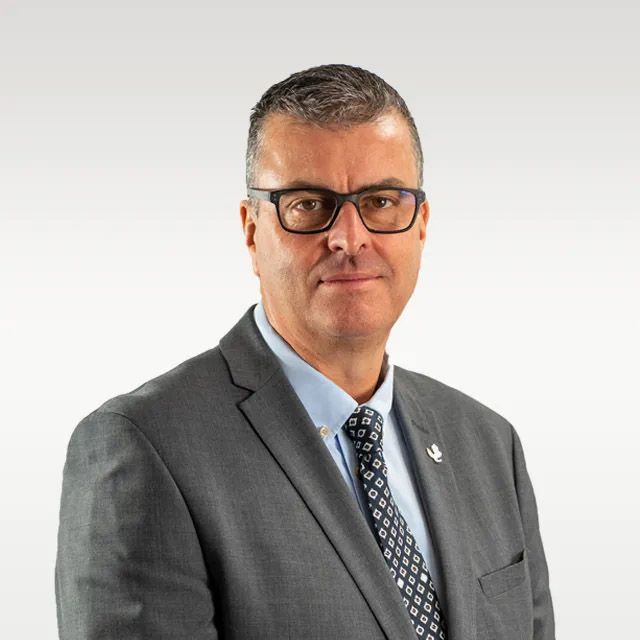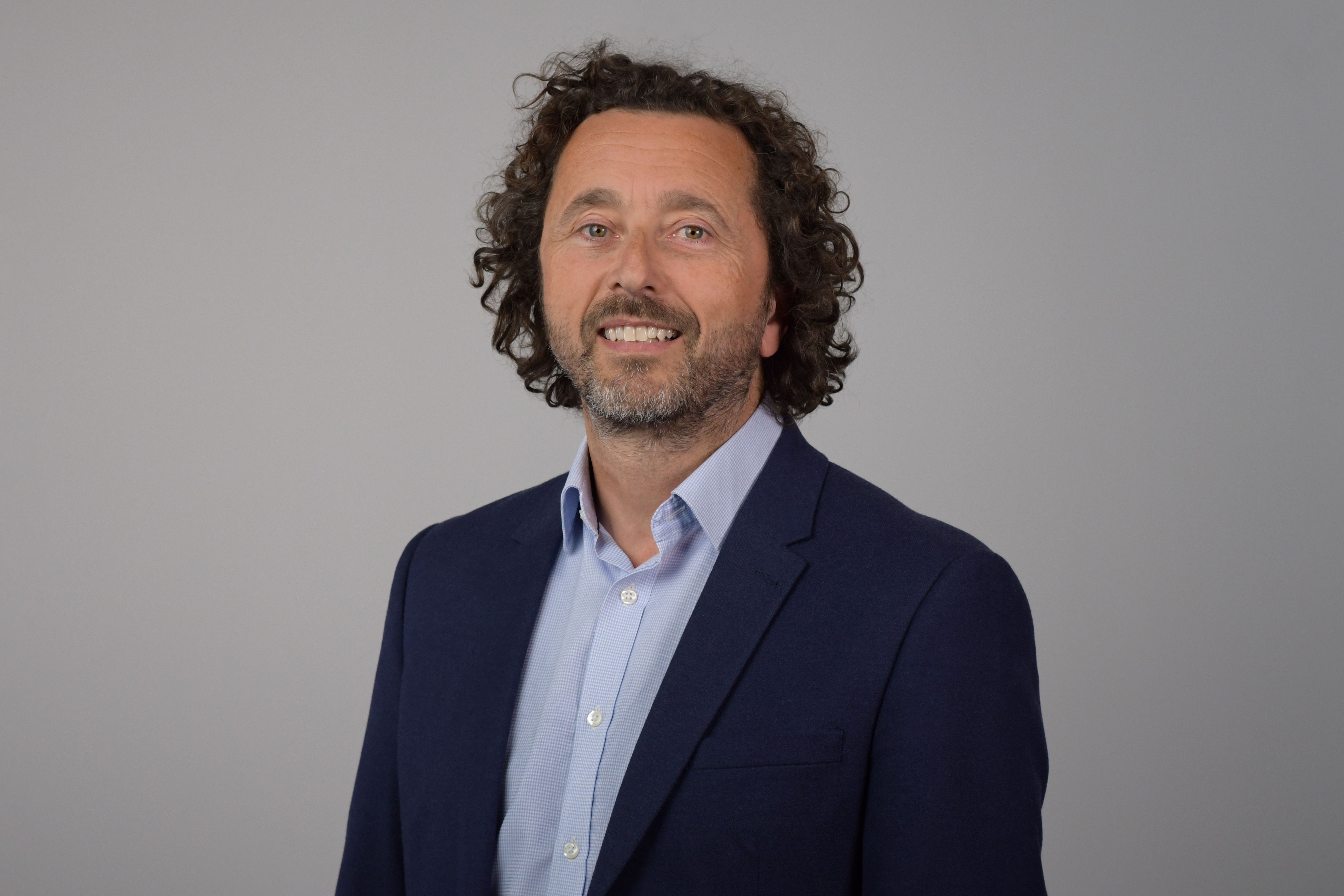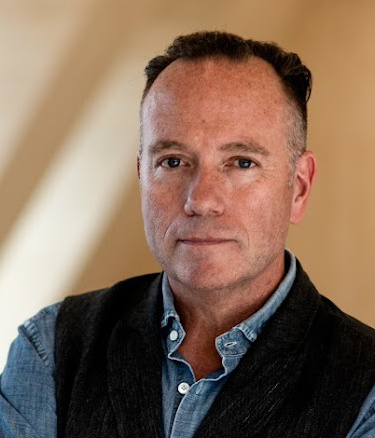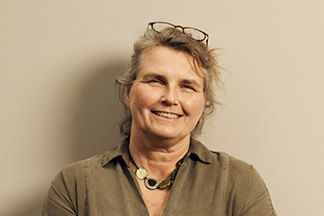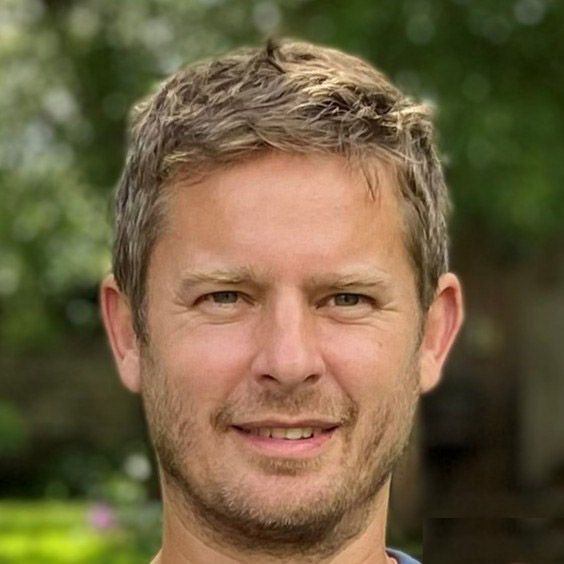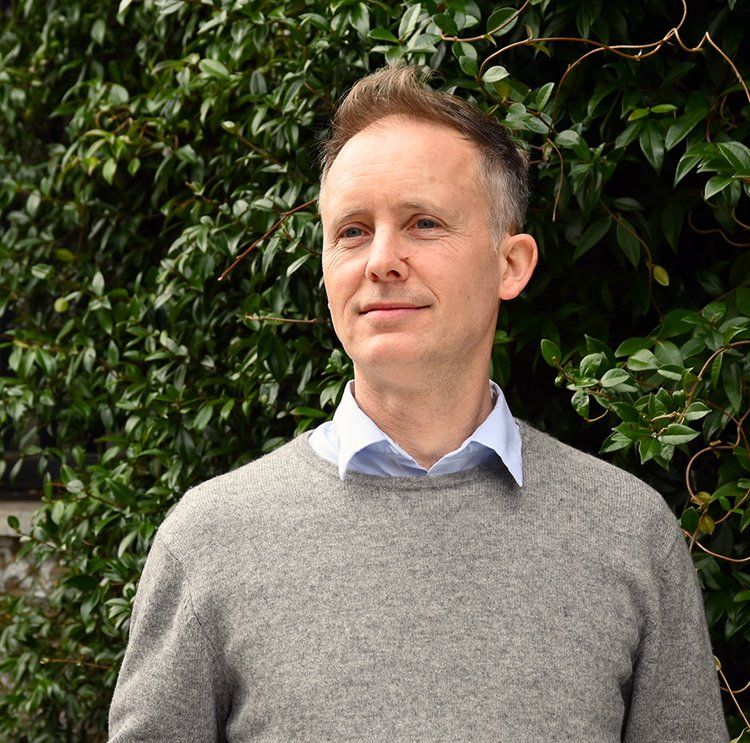)
MATERIAL FUTURES
Novel materials and new ways of using age-old materials have a role in unlocking the harder to abate embodied carbon emissions. The brand new Material Futures stage provides access to new materials already being used in buildings and also those just on the horizon.
)
INTERIORS FOCUS
Interiors Focus is the place to hear from innovators who are cutting waste, embracing the circular economy, using innovative materials and products in interior fitouts and ultimately driving down carbon emissions without compromising on quality.
)
THE TIMBER STAGE
The Timber stage will forge ahead to demonstrate the increasing foothold timber has within commercial, institutional and residential property. With its inherent ability to sequester atmospheric CO2 sustainably-managed forestry we explore how structural timber is one part of the net zero solution for the built environment.
)
FINANCING THE CARBON REVOLUTION
The Finance stage covers new financial products and regulatory changes can enable a zero carbon built environment. We listen to lenders on their green criteria, explore how ESG is influencing asset values and examine how political ambitions to decarbonise might affect the industry over the coming years.
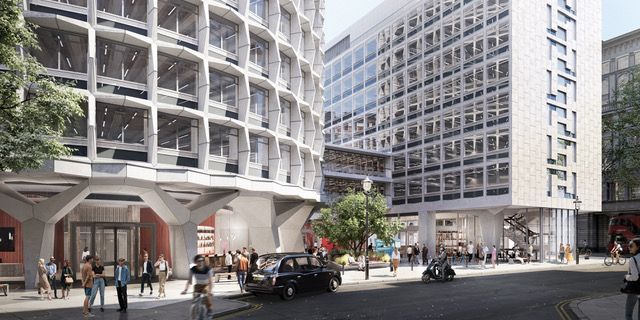
RETROFIT AGENDA
The Retrofit Agenda stage grows from strength to strength. Retrofitting existing buildings will target more than 80% of built environment emissions. We unpick this thorny issue through a variety of strategies that can be applied across the property ecosystem.
)
ZERO CARBON ENERGY
Delivery of the property sector’s net zero commitments rely on high quality, resilient low carbon energy. Using best practice examples, industry benchmarks and new tools, the Zero Carbon Energy stage covers new opportunities for demand shifting, on and off-site generation, energy centres and low carbon heat distribution networks.
)
FRINGE
As a FOOTPRINT+ sponsor your company will be promoted to all those looking to drive down carbon emissions from their built assets including developers, investors, local authorities and other asset managers. FOOTPRINT+ is the recognised leader in helping these organisations with the carbon transition that is underway.
We're sorry, but we couldn't find any results that match your search criteria. Please try again with different keywords or filters.
-
The Timber Stage90 mins
Join Sweco and their expert panel as they share their vision focusing on reducing embodied carbon and embracing circular economy principles to support the UN Sustainable Development Goals. Showcasing 36-38 Berkeley Square, Paradise, 100 Grays Inn Road and Mjøstårnet Tower in Norway, the discussions will explore how design, engineering and innovation in regulatory compliance combine to deliver sustainable timber construction, energy efficiency, and life-cycle approach, pioneering eco-friendly urban development.
Sponsored by:
-
Financing the Carbon Revolution Stage90 mins
The integration of the contractor within the design team and process is standard practice for some building types and sectors. For decarbonisation projects it can bring specific beneficial outcomes. In this session the contractor and developer will show how ECI gets projects on site with more cost and programme security and with less risk discussing:
- the incorporation of specialist knowledge in the early stages of a project
- the importance of strategic delivery approaches across key stakeholder groups
- mitigation of risks earlier in the development stages
Sponsored by:.png)
-
Retrofit Agenda Stage45 mins
In spite of higher complexity and less financial incentives, a few developers have proven that it is possible to make retrofit a main business model. On the other hand, larger developers are looking at new models for portfolio-wide "greening" through energy retrofits, low-carbon extensions, operational hyper-optimisation and product transformation.
Hear from leading UK developers on their emerging strategies to make retrofits a desirable and viable proposition on the market.
Sponsored by:
-
The Nature Stage45 mins
The built environment is a net consumer of materials and a major contributor to climate change. Future generations are concerned about how current decision-makers are seeking to address this, and many children are already considering what their role might be in the future to make a positive contribution.
Sponsored by: Chairperson
Chairperson -
Material Futures Stage45 mins
The environmental impact of construction activity is not limited to carbon emissions. The embodied ecological impacts of materials have effects on our natural environment, its ecosystems and biodiversity, both positive and negative. This session will explore impacts caused by resource extraction, manufacturing, transportation and the disposal of unused materials. What are the ecological impacts of different materials worldwide and how might this influence our broader decision-making?
Sponsored by: Chairperson
Chairperson
-
The Timber Stage45 mins
Countryside Partnership’s development in Hemel Hempstead will deliver 445 low carbon homes. Spencer’s Park is also being used as a monitoring site for Category 2 MMC closed panel timber frame, providing evidence on the benefits of offsite manufacturing, not only for a safer, more pleasant working environment for contractors, but a more environmentally friendly and sustainable solution than more traditional masonry builds.
Read more....Sponsored by: Chairperson
Chairperson -
Zero Carbon Energy Stage45 mins
Heat pumps are likely to be the principal technology used to enable the electrification of heat, yet the key characteristics for achieving an effective heat transition from fossil fuel based heating are not widely understood.
Sponsored by: Chairperson
Chairperson -
Round Table Room60 mins
The session will highlight the pivotal role of contractors in driving energy-efficient building delivery through "Design for Performance"; identifying the risks and opportunities around data and discussing the collaborative approach needed to bridge the performance gap.
Contractors play a pivotal role in the delivery of low energy intensity buildings through the holistic application of "Design for Performance" principles. By actively engaging with the design process, contractors can integrate energy-efficient solutions from the construction phase, contributing significantly to the realisation of sustainable building performance objectives.
The power and importance of data cannot be overstated. For contractors, harnessing data analytics and performance metrics, offers a unique opportunity to understand, optimise, and validate the performance of buildings.
This data-driven approach facilitates informed decision-making at every stage, from design and construction through to handover and in-use. Similarly, for customers, access to performance data empowers them to make informed choices aligned with their sustainability goals, while also enabling them to monitor and verify the ongoing operational performance of the building.
The efficient utilisation of data, acts as the linchpin in closing the performance gap, enabling contractors and customers to identify potential deviations from design expectations and take corrective actions. This underscores the critical need for collaboration, transparency, and accountability throughout the entire lifecycle of the building, from conception to occupancy.
Ultimately, by optimising the process through data-driven insights, contractors and customers can jointly drive the realisation of low energy intensity buildings, unlocking long-term operational efficiency and environmental sustainability.
Sponsored by:
-
Financing the Carbon Revolution Stage45 mins
An increased focus on ESG has given rise to a suite of new regulations, and the financial market is poised to take the lead on climate action in the years ahead. The European Union’s Sustainable Finance Disclosure Regulation (SFDR) means that all financial sector entities within the EU, including asset managers, are now required to disclose their ESG performance.
This session will explore the SFDR and the EU Taxonomy, and what they mean to investors, asset managers and developers, discussing how to:
- review and understand the current performance of their assets, funds, and portfolios
- produce comprehensive sustainability strategies for new developments, decarbonisation plans for existing assets, and climate resilience strategies for their portfolios
- reduce risk and abate risk insurance premiums and devaluation
- create opportunity for cost-effective capital funding to access and attract finance
Sponsored by:
-
Material Futures Stage45 mins
Since architects Martorell, Bohigas, Macklay and engineer Peter Rice built the 1992 Pavilion of the Future for the Seville World Expo from granite, what has changed in the use of stone in modern buildings? During the last 30 years updated systems and technologies have enabled the development of new stone building typologies. From a simple brick to highly engineered prefabricated pre-tensioned system, stone has proven its versatility, efficiently addressing pressing issues of the over consumption of energy.
Sponsored by:
-
Retrofit Agenda Stage45 mins
In 2019 New York City adopted a unique piece of legislation called Local Law 97 setting out operational GHG emission limits for all buildings in the city, both new and existing. A first of its kind internationally, the standard sets maximum emission levels by building program and type, which become progressively stricter until 2050, and sets fines for non-compliant owners. As the law comes into effect in 2024, hear from NYC design and engineering experts on the implications of meeting these requirements and the effects they are having on development, covering:
- the history and development of Local Law 97, and what it requires from buildings
- its effect on the approach to design being taken by developers, institutions and the building industry in general
- its relation with energy code requirements and voluntary certifications like LEED
- its specific impact on the development of key ongoing projects
Sponsored by:.png)
-
The Nature Stage45 mins
Some novel nature-based materials have been around for millennia but have fallen out of mainstream use, while others are entirely new and innovative. The regenerative capability of new nature-based construction materials may be well-documented but it doesn’t automatically follow that a regenerative product can be brought into the supply chain.
How do we identify and overcome the stumbling blocks in insurance, warranties and other barriers?
Sponsored by:
-
Financing the Carbon Revolution Stage45 mins
Bloom Camberwell is one of the first logistics facilities in the UK able to demonstrate true alignment with the Paris Agreement commitments on climate change through the UK ESG Taxonomies. Sustainable investment funds require project teams to show compliance throughout the project lifecycle so assessments needed from Stage 2 have included:
- Climate Vulnerability and Risk Assessment
- Disassembly and Adaptability Study
- Global Warming Potential Study
Monitoring throughout the detailed design and construction phases by the contractor, supply chain and wider project team will be used to verify the outcomes up to practical completion. These evaluations are critical in informing the Taxonomy Specification and ultimately fulfilling the regulatory requirements of an article 8 or 9 fund.
Sponsored by:.png) Chairperson
Chairperson -
Zero Carbon Energy Stage45 mins
The UK NZC Building Standard sets out to provide a methodology by which buildings can be assessed as Net Zero against Science-Based targets to reduce emissions in line with the Paris climate agreement. Working groups have tackled 13 different building sectors to determine an approach to setting limits on embodied carbon and operational energy, and minimum targets for aspects such as on-site renewables, demand flexibility, etc.
Sponsored by:
-
Round Table Room60 mins
The world continues to change. We are rapidly developing new technology, new materials, new best practice, and new legislation to help us deliver a better built environment and safeguard the future of the planet.
But how do we lead our teams to harness the opportunities of constant change? Retrofit is no doubt a sustainable solution, but projects can be risky and complex - how can we provide reassurance and confidence to reduce risk throughout?
This session will explore evolving leadership across projects, using real life examples and lessons learnt to provide tangible outcomes to improve the way we work as teams.
Sponsored by:.png)
-
The Timber Stage45 mins
In Scotland timber-framing accounts for 83% of the market and in England it is 23% and growing (1). Setting out to bust myths around the difficulty of delivering timber-framed volume housebuilding developers and consultants delivering this will answer:
- What are the factors that have expanded the use of timber-framing for housing in Scotland? Are they replicable throughout the UK?
- What are the implications for decarbonisation of the overall housebuilding industry?
- What are the options for multi-family apartment buildings available today?
- How can we regulate to support low-carbon structure for new build housing?
Sponsored by: Chairperson
Chairperson
-
Retrofit Agenda Stage45 mins
Buildings and campus identity are a big consideration for students deciding where to study. Frequently new buildings are proposed, with designers selected through competition competing to develop modern state-of-the-art facilities.
Higher Education is moving on from that model to give existing buildings and campuses a new lease of life. This approach retains and enhances the character of its campuses for generations to come making best use of existing buildings, saving demolition and the embodied carbon burden that entails.
Sponsored by: Chairperson
Chairperson -
The Nature Stage45 minsThe Environment Bill has created obligations for developers that can have unintended consequences, not least the provisions for offsite gain or payments to local authorities in lieu of on-site provision. A tight urban site can seem to offer few opportunities to increase biodiversity and support nature. In this practical session addressing the challenges of delivery BNG within the red line boundary we hear from several specialists on strategies for increasing biodiversity on the most challenging of urban sitesSponsored by:
 Chairperson
Chairperson -
Material Futures Stage45 mins
Steelmaking has been in transition for over thirty years but the key to a carbon neutral steel industry is decarbonising primary steelmaking, which accounts for approximately 70% of global manufacture. Multi-billion-dollar investments are required to achieve this interim goal and transform the way that we make primary steel. It’s also possible to improve the carbon offer of secondary steelmaking too.
How do developers and designers choose partners who are really engaged with the Paris agreement and are able to deliver it, moving the steel industry/construction sector forward together toward that common goal? Early tender and design stage collaboration with major developers is already reaping benefits.
Sponsored by:
-
Financing the Carbon Revolution Stage45 mins
There are growing regulatory and commercial risks associated with older, less energy-efficient buildings. Over 70% of the UK’s commercial stock was built before 2000 so a huge proportion of buildings will require retrofitting to meet Net Zero goals. Building on the industry-led work by the UKGBC Task Group, the panel will debate the successful delivery of net-zero focussed retrofits. Using analysis from completed projects they demonstrate how significant reductions in operational energy are possible through optimising buildings and light retrofit works, which can be undertaken by either landlord or occupier. The bigger wins come from deep retrofit.
Sponsored by: Chairperson
Chairperson -
The Timber Stage45 mins
Metropolis is the deep retrofit of the Woolworth’s HQ building designed by Richard Seifert. Designed to be net zero in operation the project has also saved an estimated 25,000 tonnes of embodied carbon through building retention, mass timber extension and fossil-free fuel in operation. Delivering an exceptional product to future occupiers, the design incorporates around 15% amenity space including gardens, roof terraces, shared amenities and end of journey facilities . Come and hear from the team on the particular challenges faced to achieve the project including:
- improvements to building fabric while retaining as much of the historic facades as possible
- the design, approvals and insurance procedures needed to build out of exposed mass timber
- delivering amenity-rich, sustainable workplaces for occupiers
Sponsored by: Chairperson
Chairperson -
Round Table Room60 mins
The impacts of climate change are all around us. So, what practical steps should you take to adapt your business, supply chains and real estate to mitigate the risks and ensure long-term resilience and success?
Join our roundtable debate to explore how evidence-based climate risk and vulnerability studies can shape the adaptation of real estate, so it’s resilient, valued, and not stranded.
Led by our team at Hydrock who conducted a ground-breaking climate risk study of the University of Nottingham’s campus, we’ll debate with you:
- How to identify the physical and transitional risks of climate change to your business and real estate
- How to develop an adaptation strategy and prioritise investment
- How adaptation is a critical part of your overall ESG strategy
Capacity is limited to 14 to encourage a lively, candid and collaborative conversation.
Sponsored by: Chairperson
Chairperson -
Zero Carbon Energy Stage45 mins
The British Property Federation's recent Towards Net Zero research asked investors, developers, managers, owners and occupiers about the challenges they were facing in their path towards net zero. Senior leaders from 45 different organisations identified that the biggest challenge they or their clients/tenants faced in the transition to net zero carbon was access to sufficient energy consumption data.
Join the panel as they discuss the data challenges across different asset classes:
- exploring the importance and use of energy data in reaching net zero and the role of technology
- highlighting good practice with case studies
- exploring perceptions around the role of landlords in sharing data
- the development of policies around energy consumption data
-
Material Futures Stage45 mins
Every single day, the UK Construction industry produces enough waste to fill Tottenham Hotspur stadium. Moving towards a circular economy in construction requires whole system change, involving clients, designers, contractors and resource management companies. Grounded in the hard reality of commercial delivery of construction, digital solutions and new standards will need to be adopted.
Sponsored by:
-
The Nature Stage45 mins
According to the Local Government Association, nearly 700,000 direct jobs could be created in the low-carbon and renewable energy economy in England alone by 2030, rising to more than 1.18 million by 2050. The large scale rollout of retrofit and other construction activities necessary to deliver low-carbon real estate is dependant on the development of a skilled workforce. How do we encourage people to train for these roles and what will be needed to make these dreams become reality?
Sponsored by:
-
Retrofit Agenda Stage45 mins
Havelock is a Manchester office building that was ready to be repositioned by Credit Suisse Asset Management. Elements including the original services were beyond their useful lifecycle and would have struggled to attract strong covenant occupiers. Working in close collaboration, the project team including development manager Simten, OMI Architects, Savills Earth and Savills specialist GreenFiT Project Management team were able to define the level of retrofit proposed by considering shifting market expectations, the uncertainty over upcoming ESG requirements for commercial letting, and the client’s own net zero ambitions.
Sponsored by: Chairperson
Chairperson
-
The Timber Stage45 mins
Lightweight timber extensions can achieve large increases of accommodation with lower embodied energy and utilising existing foundations.
Engaging a design team to appraise your portfolio for extensions opportunities can be time consuming and costly.
A new free, open access digital tool is being developed to enable property owners and asset managers to do this for themselves. Hear from the designers of the tool on the objectives and the level of detail needed as input to the tool and watch a live demonstration of the process in action.
If you would like to submit one or more buildings as the demonstration portfolio please contact FOOTPRINT+!
-
Financing the Carbon Revolution Stage45 mins
3 Sheldon Square sits in British Land & GIC's Paddington Central campus, adjacent to Paddington Station. 3 Sheldon Square was originally constructed c2000, and with all office tenants vacating in 2022, British Land explored a multitude of development and refurbishment options.
Retention and reposition of the existing building was the preferred scheme option taken forward, and the project achieves Practical Completion in Q1 2024. This session looks to explore the rationale behind the preferred scheme option, sustainability success and how this fed into attracting a significant anchor letting to compete with new build office product in the vicinity.
Sponsored by:
-
Zero Carbon Energy Stage45 mins
The UK has the oldest housing stock in Europe with up to 40% homes built before 1946. Decarbonisation of the sector is progressing much slower than on much of the continent. Across the UK 70% of homes are owner occupied, 18% are in some kind of social rent and 12% in private rent.
What solutions work for our older housing stock? With 17% of emissions coming from residential building in the UK, the sector has fallen behind due to a mix of lack of funding and uncertainty that the public feel about what they should do. Come and hear how two projects are facilitating housing retrofit and what these tools could mean to reduce carbon emissions from the built environment.
Sponsored by:.png)
-
Round Table Room60 mins
Join us for an engaging 60-minute roundtable discussion focused on Insurance and Risk Management. Hosted by Lockton’s experts: Rachel Norris, Peter Chesterfield and Lily Strange from Lockton's Global Real Estate and Construction Practice.
What to expect from the session:
- Understanding how to navigate long-term insurance protections amidst the challenges posed by physical climate factors and modern construction methodologies.
- How evolving trends in decarbonised built environments are impacting insurance programmes and integrating effective risk management strategies for optimised outcomes.
- Showcasing the pivotal role of collaboration among startup companies, developers, asset owners, insurance brokers, risk engineers, and insurers have in driving forward the ESG agenda.
- Addressing the considerations for insurance losses before they occur.
We want to hear from you, whether it be sharing your challenges or presenting case examples. We hope the session will provide collaborative insights, focused on facilitating a dynamic exchange, and providing valuable support on how to effectively navigate a critical facet of the built environment.
Additionally, we are honoured to welcome Darren Tanner, Head of Real Estate Specialty at AXA Insurance Plc, who will offer valuable perspectives from an insurer's standpoint.
Sponsored by:
-
Retrofit Agenda Stage45 mins
Castleforge’s redevelopment in Golden Lane reimagines a heritage asset at the heart of the city. Sustainability has been a key driver for the client with a variety of certifications undertaken and a desire to get the project recognized as Net Zero in Operation and Construction within the current UKGBC framework.
Using Circular Economy principles has been key to minimising embodied carbon; there have been challenges and successes. A low-carbon timber extension would have significantly increased embodied emissions due to the fire protection measures necessary and over-cladding existing facades was unviable due to the poor structural condition. However, successes have included salvaging steel from the original building, enabling the addition of four storeys without any foundation strengthening and a thorough deconstruction process ensured 96% of the existing structure is retained along with other elements.
Sponsored by: Chairperson
Chairperson -
Material Futures Stage45 mins
Facades are the skin of a building playing a role in thermal efficiency, daylighting and aesthetics etc. Improving the external envelope of buildings can be one of the most effective ways to alter a potentially stranded asset and give it a long term future, saving the embodied carbon within the existing building. What considerations should be foremost in the project team’s mind? This session will cover:
- establishing the trade-off between operational and embodied carbon costs of different solutions
- replacement of glazing, thermal elements and cladding materials
- early engagement with contractors
Sponsored by: Chairperson
Chairperson -
The Nature Stage45 mins
In a climate of economic insecurity, is regenerative thinking yet another industry buzzword, or can it materialise into meaningful financial, environmental and social value?
Regenerative thinking goes beyond merely lessening the harm of new development; it strives to leverage design and construction as positive forces that repair natural and human systems. This means transitioning from the traditional sustainability focus on "doing less bad," towards "doing more good".
Sponsored by:
-
Zero Carbon Energy Stage45 mins
The electrification of heat via air source heat pumps is becoming more common, but water bodies provide an untapped and economical energy resource for projects situated near rivers and lakes.
This session will look at schemes in detail to understand the potential of various types of water-sources, the scale of the infrastructure needed to access the energy and how to accommodate these facilities within a heritage context. Learn from the teams behind the Clydebank district heating system and Darwin College, Cambridge how heat from water bodies can deliver energy to schemes.
Sponsored by:
-
The Timber Stage45 mins
Poorly-managed forestry can cause greater environmental impact than any benefit from building with wood so the origins of timber and the stewardship of forests are critical to sustainable development. How can the industry be certain that material used in construction is from well-managed sources?
Sponsored by: Chairperson
Chairperson -
Financing the Carbon Revolution Stage45 mins
Climate change resilience is therefore a recurring theme within all global new and emerging ESG disclosure frameworks, including the SFDR and EU Taxonomy. Born off the back of the insurance industry’s recent losses due to the physical impacts of climate change, there is a growing emphasis on mitigation and evaluation of physical risks to individual assets and portfolios. It is expected that all buildings will require bespoke physical risk assessments and adaptation strategies within the next three years, or risk insurance premium rises and asset devaluation.
This session will introduce the definition of Climate change resilience and adaptation including the SFDR and the EU Taxonomy, requirements including:
- to review the risks to individual assets or entire funds for their physical, reputation and transitional risks associated with climate change in accordance with TFCD and IFRS S2 Climate-related Disclosures
- to produce risk reduction plans and implementation strategies to future proof assets, funds, and portfolios
Sponsored by: Chairperson
Chairperson
-
Bar and Terrace300 mins
FOOTPRINT+ bar and terraces will be open for an evening of networking till 10pm. This is included for those in attendance on a 1 day delegate pass on Wednesday.
Access for the evening can be gained if you are not a FOOTPRINT+ delegate for £50 from 5pm till 10pm withcomplimentary bar snacks.
-
Retrofit Agenda Stage180 mins

As stream sponsors of the Retrofit Agenda Stage, Atelier Ten is hosting an evening reception to capture the momentum of the inspiration and insights on what net zero carbon really implies.
Our drinks reception will provide an opportunity to keep the conversation going in a relaxed and informal setting to share ideas on how we can move from “doing less bad” and create holistic, positive impacts. Get in touch if you are interested in attending.
By invitation only. To register an interest in attending, please contact us - Register Interest
-
Financing the Carbon Revolution Stage90 mins
Real estate businesses, funds and assets with a robust understanding of how to leverage ESG benefits through their activities place themselves at a strategic advantage in the market - minimising risk and enhancing future resilience – so it’s more important than ever to understand this trend for long term commercial success.
Join Workplace Futures Group, Modus and Lifeproven to debate the influence of ESG on the rapidly evolving landscape of real estate investments, and reveal how to develop a robust ESG strategy that focuses on enhancing both the financial and impact performance over time.
This session will cover several key factors involved in implementing and maintaining a successful ESG strategy through all key real estate stages; including pre-acquisition due diligence, design and funding targets, engaging key stakeholders to understand the additional value you deliver for them, procuring the right contracting team to deliver your strategy, capturing key ESG data through construction and operation, and also leveraging the right information to drive rental or sales demand.
Sponsored by:
-
Material Futures Stage80 mins
Mayfield School's Health & Wellbeing Centre integrates natural materials such as stone and timber in an innovative and sustainable way, with a special focus on the revolutionary use of low-carbon stone brick. Addressing not only the physical and psychological needs of students the building serves as an educational tool on sustainability. Spatial and material considerations result in a design that is warm, protective, and conducive to mental well-being.
Substituting traditional fired clay brick with stone brick delivers an 86% reduction in carbon emissions. The stone brick's cutting process, powered by renewable electricity, offers flexibility in size and shape. Strength and size advantages open doors to larger format units, enabling the use of single stone blocks for lintels and monumental slabs for entrance portals.
Sponsored by:
-
Retrofit Agenda Stage80 mins
Achieving a net zero economy by 2050 is a significant challenge for the UK. This Breakfast Briefing will delve into the potential benefits of adopting a retrofit-first strategy and its role in advancing our journey towards net zero.
Retrofitting holds the promise of reducing carbon emissions, energy consumption and utility expenses, but what are the actual reductions being achieved? A successful retrofit can enhance indoor air quality and thermal comfort, but is this happening in reality? We know that retrofitting incurs significant costs, but what exactly are our expenditure figures and what financial savings will the client and occupier realise?
Join SRE and Savills Investment Management who aim to answer these questions and more by measuring the impacts of retrofitting the award-winning Cathedral Hill Industrial Estate, Guildford.
This session will cover key factors involved in the retrofit, from initial client objectives, the process itself, outcomes and how what has been learned can apply equally to retrofit and new build projects.
Sponsored by: Chairperson
Chairperson -
The Timber Stage90 mins
Timber construction is often seen as a universal remedy to the climate crisis, but there is no magic bullet. In this session hosted by White Arkitekter we will explore the place for timber within major urban development schemes, with perspectives from 3 leading developers from the UK and Sweden who are pushing the boundaries of large-scale development with their commitment to sustainability.
White Arkitekter will present their involvement in the Wood City project together with landowner and developer Atrium Ljungberg, as part of the long-term regeneration of the Sickla area in southern Stockholm. Under the premise of ‘right material in the right place’, we will compare the varying development contexts of Stockholm and London to question: what is the role of timber in sustainable city transformation?
Sponsored by:
-
The Nature Stage45 mins
Construction projects have an immense capacity to drive change. As our sector’s interdependency with nature becomes more pronounced, how do we harness that capacity through procurement techniques? We hear from public sector construction stakeholders, who are involved in billions of pounds of construction output, how they use the procurement of construction activities to support the development of nature-based solutions.
Sponsored by:
-
Retrofit Agenda Stage45 mins
GLA Whole life carbon and Circular Economy policies have transformed development in London. Councils, such as Westminster City and City of London, have developed borough-specific policies that go one BIG step further developing specific planning targets to prevent demolition and being to set limits to embodied carbon emissions.
What is the future for planning policy in evaluating retrofit and new build proposals?
Sponsored by:
-
Material Futures Stage45 mins
There are myriad concrete technologies in development around the world, but the majority of these are at the laboratory stage and not ready to deploy. In this session we cover three of those that have made it to the supply chain: GGBS, limestone fines, and calcined clays.
GGBS is a finite resource. What should developers and specifiers know about making the best use of the limited supply to drive down the carbon emissions of concrete?
Limestone fines and calcined clays are abundant resources. They can be used separately or in combination (as "LC3") to deliver carbon savings on a similar level to a high-GGBS mix concrete. Some concretes using these can achieve as much as a 50% lower carbon footprint than ordinary "CEM I" concrete. What are the realities of using these products in the UK and what is the potential to scale production to meet demand?
Sponsored by:
-
Financing the Carbon Revolution Stage45 mins
Social value delivers public benefit while tapping into the skillset of the development industry. What place has social value in property?
With different approaches from three developers, this presentation will discuss both direct and tangential benefits of social value creation. Is social value the new philanthropy and could it signal a change to S106 contributions?
Sponsored by:
-
The Timber Stage45 mins
Xylo, the largest consented all-timber office building in the UK, is a 9-storey, glulam and CLT framed office building in Clerkenwell. Designed as a kit of parts, it proposes a new typology of sustainable office building based around the future adaptability and the wellbeing of its occupants. This whole building approach to sustainability demonstrates that when retrofit isn’t an option, Mass Timber can offer the most environmentally responsible approach. Exceeding the sustainability targets set by both the GLA and Camden Council, this building has been calculated to lower operational carbon emissions by up to 82% over a typical office building. The offsite fabrication of the timber structure lowers the construction phase carbon emissions and as a result, overall embodied emissions will be 25% better than the aspirational GLA WLC benchmark and better than the UKGBC Case for Net Zero Feasibility Study Stretch Targets.
Sponsored by:
-
Interiors Focus Stage45 mins
Businesses are being encouraged to monitor and disclose the results of their carbon emissions, despite the absence of a current legal obligation, highlighting a pressing need for action. For contractors, Scope 3 emissions will likely account for 95%+ of carbon emission so there is no route to Net Zero without tackling Scope 3.
In this session we will explore, with those who have done it, the process of measuring true Scope 3 in the construction industry. Panellists will talk about how about their personal experience tackling the measurement of Scope 3 in their organisations, offer practical guidance and offer a call to arms for the industry to embrace the Scope 3 challenge.
Sponsored by:
-
Round Table Room60 mins
A report by the Resolution Foundation recently found that Britain’s housing stock offers the worst value for money of any advanced economy. With UK properties described as “expensive, cramped and ageing”, the need for high-quality, low carbon homes is great, and the need is now.
In this session we will explore, the barriers stopping the UK from meeting its housing targets and the steps needed to incentivise housebuilders towards building well insulated, low energy homes that bring meaningful, long-term benefits to residents and local communities.
The session will also focus on case studies and success stories from across Europe to analyse what lessons and innovative solutions can be used to make Britain’s housing stock better value for money and more energy efficient both in the short and long term.
Sponsored by:
-
The Nature Stage45 mins
Regenerative construction is an approach to planning, design and construction that aims to create sustainable, resilient, and thriving communities. It goes beyond traditional sustainable development, beyond recycling and reuse, by focusing on restoring and replenishing ecosystems, enhancing social well-being, and fostering economic vitality. Success in regenerative construction is reliant on the value chain working together.
This session will focus on the findings of a novel digital project completed by Morgan Sindall Construction and their partners to re-consider how a secondary school that they completed in 2021 could be re-imagined as a regenerative asset. The project specifically identified the socio-economic impacts arising from renewable processes and products. What are the implications for supply chain, communities, government and individuals?
Sponsored by: Chairperson
Chairperson -
Material Futures Stage45 mins
The majority of construction glass goes to landfill because the industry has not established the knowledge and procedures to divert this precious and carbon-intensive commodity back into the supply chain. As with all materials, the journey to reuse starts with identifying the glass within a building to understand what can be accepted as cullet back into the float manufacturers' furnaces. The panel will guide you through the entire process of assessment, removal and remanufacture illustrated with the first significant examples of construction glass recycling taking place over the next months.
Sponsored by: Chairperson
Chairperson -
Retrofit Agenda Stage45 mins
The Seymour Centre revitalisation project, guided by Westminster City Council, exemplifies a fabric first approach to decarbonisation and sustainability. Embracing the building's art deco origins, designed by Kenneth Cross in the 1930s, this Grade II-listed building will undergo a transformation to adapt its existing leisure purpose into a modern, sustainable community hub.
To deliver Westminster’s ambition the team employed a strategy of firstly understanding the existing building, to know what it could become, using the least material to get there. The full utilisation of the existing building fabric was prioritised with interventions only where considerable user benefit could be achieved. The community was engaged and underused spaces have been creatively repurposed to provide for their needs. De-carbonisation was a key consideration, delivered through a major overhaul of building services and fabric upgrades.
The result a 21st century resource for the community that preserves the buildings heritage and significantly undercuts industry best practise in terms of embodied and operational carbon.
Sponsored by: Chairperson
Chairperson
-
The Timber Stage45 mins
A key part of this project’s development was to look carefully at how Passivhaus can be achieved sympathetically within a sensitive historic context, striking a balance between conservation principles and energy performance. The project provides high quality accommodation for 128 students with a mixture of new construction, refurbishment, and upgrades to the two Grade II Listed buildings on the site.
Sponsored by:
-
Interiors Focus Stage45 mins
Remote work may be better for the environment, it may not always be better for us. Leaving the issue of energy consumption to other sessions here at FOOTPRINT+, in this panel we address the social and personal costs of working from home.
A large-scale meta-analysis of the impact of remote work on people’s wellbeing was published in February of this year. Based on nearly 2,000 studies, the report concludes that outcomes vary enormously depending on people’s age, location, role, personal circumstances, seniority and career stage.
Sponsored by:
-
Financing the Carbon Revolution Stage285 mins
Carbon calculations rely on accurate data and modelling of the embodied carbon in proposed schemes. Significant decisions about the direction of the project including weighing up the relative value of refurbishment vs. demolition and rebuild are based on these results.
How can we develop consistent carbon modelling and establish a consensus on the approach to be used?
How do these figures need to be updated as methods evolve?
Sponsored by: Chairperson
Chairperson -
Round Table Room60 mins
Our economic system must transform; from linear to circular and the construction and real estate sectors play an important role in this transformation. In addition to the environmental and social aspects of this transformation, it is time to understand the potential financial benefits for asset owners. Indeed, the extent to which we manage to respond to the demands of the current system - heavily grafted onto financial incentives - will determine the speed of the transformation. Only if we succeed in making the morally desirable also financially attractive will we have a chance of achieving speed in the necessary transition.
We invite you to join us in this round table discussion to explore these financial benefits. Following some introductory presentations to set the scenes we will have an open discussion exploring:
- how residual value can be translated to balance sheets?
- whether material passports in their own right can add value to assets?
- how circularity can support financial instruments?
Sponsored by: Chairperson
Chairperson
-
The Nature Stage45 mins
Our economies depend on the resources given to them for ‘free’ by nature and the environment. Construction activities are highly dependent on these resources. Increasingly, the international community is recognising the vital role of nature and biodiversity in tackling the climate challenge in a way that enables communities to thrive. This growing international focus on preserving and restoring natural landscapes is creating new alternative asset classes based on nature itself.
How can we ensure that the complex ecosystems on which life depends are not depleted? How can construction businesses invest in natural capital and what are some of the positive outcomes?
Sponsored by: Chairperson
Chairperson -
Retrofit Agenda Stage45 mins
This booming building typology has gone from strength to strength in the last few years, particularly following the pandemic, once everyone's awareness of health and wellbeing was heightened. Hear from some of the leading experts on how to balance the rapid expansion in this sector with the drive for Net Zero performance and wellness requirements for life sciences employees.
Sponsored by:.png) Chairperson
Chairperson -
Material Futures Stage45 mins
Join the University College of Estate Management to explore the future of materials and go beyond the limitations of a society determined by its technology. While the mainstream narrative places technological advancement within the sector as the magic fix for every and all sustainability challenges, this session will question that rhetoric for a more nuanced approach.
This session will delve into an alternative perspective that considers the historical context of the past, current realities of the present, and future possibilities.
Sponsored by:
-
Financing the Carbon Revolution Stage45 mins
Scope 3 emissions reporting can be challenging, but could widespread Whole Life Carbon Assessments (WLCAs) make the process easier? With a range of industry voices including UKGBC, Part Z and IStructE calling for regulations to mandate whole life carbon assessments, this session will explore how the industry can utilise and optimise emissions reporting. In particularly, panellists will discuss:
- How to understand the link between project-level WLCAs and organisation-level emissions reporting
- How using WLCAs within Scope 3 reporting could improve the overall accuracy of emission reporting in accordance with GHG Protocol
- Why widespread WLCAs are necessary to focus industry’s emissions reduction efforts on the critical areas, the construction and operation of built assets
Hear from key stakeholders working to implement these procedures within their businesses and the effects that doing so is having for the wider construction industry.
Sponsored by:
-
Interiors Focus Stage45 mins
Late in 2023, a dedicated cross-sector research group was set up to better understand the upfront carbon emissions associated with Cat B Office fit out projects. Created as an extension of the Offices Sector Group for the UK Net Zero Carbon Buildings Standard, the team sought to obtain data on the current industry performance level of Cat B office fit outs. This information is intended to be used in the limit-setting exercise to help apportion the industry’s remaining carbon budget, before release of the Beta Test version of the Standard in Summer 2024.
The results of this research have informed subsequent discussions around the cumulative embodied carbon impact of Cat B Fit Out projects, which is the subject for this panel discussion.
Sponsored by:
-
The Timber Stage45 mins
The concept of a building being not fit for purpose has been used for any years to justify demolition at huge environmental and social cost. In previous generations this would have been almost unthinkable. The buildings we now cherish stood the test of time and are now extremely desirable. What does it take for buildings assumed ‘not fit for purpose’ to be redeveloped continuing to fulfil their potential? How can we challenge the arguments that buildings should be demolished and reimagine them as high-value prime real estate?
Stakeholders from various disciplines will debate:
- what are the characteristics of buildings which the next generation are looking for
- how can we challenge the standards for offices that are used to communicate a high spec desirable workspace
- what elements within specification are the most important to users, that they are willing to pay for
- strategies for preserving character both inside buildings and in the street scene
Sponsored by:
-
Material Futures Stage45 mins
From extraction to use, stone is a low environmental impact material. Ready to use, affordable, plentiful and easily adapted for reuse, stone is more relevant than ever.
At the heart of stone construction there is a very low carbon footprint, with no heating/cooking process required, very little water needed, with a nose to tail approach including all the wonky bits for a 100% yield of the extracted material.
Sponsored by:
-
Retrofit Agenda Stage45 mins
Berkeley Homes achievement is a story of two halves, not only a sustainability and retrofit success story but a journey into the rich history of an ever-changing London. For the retrofit half of the story, the entirety of the ICI headquarters were repurposed to residential units. An imposing steel framed structure from the 1920s, modern regulation necessitated redesigning many aspects of the circulation, fire protection and servicing of the existing building.
Sponsored by:.png)
-
The Nature Stage45 minsEden is an 11-storey office building in Manchester with a host of sustainability goals. This session will focus on the benefits of its living wall. Featuring 350,000 plants and 32 different species the system replaces regular cladding at a reasonable cost. Attracting birds, bees and bugs, it will provide a huge increase in biodiversity. The plants also remove air pollutants, reduce urban temperatures, and ultimately capture carbon. The team behind it will present:
- how and where it can be installed
- what needs to be done to maintain it
- as a soil-based system how it compares to other living wall solutions
- what are the benefits for carbon sequestration and a host of other sustainability metrics
Sponsored by: Chairperson
Chairperson
-
Interiors Focus Stage45 mins
Interior office refits take place on average every 3 years and hospitality every 5-7 years causing a huge amount of furniture to enter landfill. Furniture also often uses non-recyclable single use plastics, foams and fabrics.
Key members of the supply chain at the forefront of the linear to circular transformation discuss the hierarchy of furniture reuse.
Sponsored by:
-
Financing the Carbon Revolution Stage45 mins
Philanthropists and impact investors come together to discuss a range of approaches to effecting climate and nature action in property and urban development considering:
- Net zero in the embodied energy in buildings - a philanthropic approach
- Net zero in building energy use - an investment approach
- Greening cities - nature in the built environment
- Effecting change from within - leadership in construction
-
The Timber Stage45 mins
Scott Doig from Haptic Architects will present their winning proposals for Tårnkvartalet, by Haptic Architects and PIR2. Tårnkvartalet is a new school and cultural centre for the Bærum municipality, creating a bold new landmark building on the site of Oslo’s decommissioned airport, for an emerging neighbourhood in Fornebu.
Metaform Architects and Latz + Parner will present their highly commended scheme for Sinterbecken, Belval, Luxembourg.
Federico Saralvo will present the Camerich Jiaxing Factory, Jiaxing, China also highly commended, by the practice Neri & Hu.
Presentations will be followed by remarks from Manon Mollard, Editor, Architectural Review.
Chairperson
-
Retrofit Agenda Stage45 mins
Cultural buildings have a different remit to most building typologies as they typically have high heritage and architectural value and are often listed. As such retrofits need to be sensitive and primarily ensure the preservation of the building fabric and artefacts contained within. At the same time, cultural buildings, particularly museums can have very high energy intensity due to their conditioning requirements leading to tension with requirements for fabric upgrade. We gather leading experts delivering some of the most important cultural buildings in the UK to hear how a sensitive retrofit tapestry is being achieved at the Burrell Gallery in Glasgow, the Museum of London and the Barbican in London.
Sponsored by:
-
Material Futures Stage45 mins
Steel is the most carbon-intensive structural material, and it’s all around us. Much of the steel reuse conversation is about salvaging steel from ‘donor’ structures and reusing it for another building. This reduces embodied carbon and material use but still requires demolition and material transportation.
- What if we could avoid demolition, transporting steel and their negative impacts?
- What if we could keep the steel elements within a building and simply move them around to suit a new use?
- What if we could jack up entire floors or facades and raise the bar for steel reuse?
To answer these questions a project team composed of Elliott Wood, Deconstruct, Buckley Gray Yeoman and Simten decided to do the heavy lifting. Join them as they discuss elevating entire floors taking the building from six to eight floors, leading to a 30% increase in floor area, and reducing embodied and transport emissions and materials use along the way.
Sponsored by: Chairperson
Chairperson -
The Nature Stage45 mins
Communities are coming together to change the places where they live for the better and to develop their skills, build their confidence and make new friendships. Enabling businesses to put their corporate responsibility strategies into action helps connect them with communities and helping them build social value into their services.
In this session we hear from the groups, organisations, businesses and landowners creating and developing landscapes and green spaces that boost wellbeing, increase resilience and bring a bit of happiness and joy to those that use them, whilst also delivering biodiversity improvement and help to combat climate change.
Sponsored by: Chairperson
Chairperson
-
Financing the Carbon Revolution Stage45 mins
Sustainable development practices are accelerating, driven by tightening regulations, investor demand and shifting end user preferences. In this session we explore the integration of ESG by property developers, the strategies, successes, and hurdles along the way.
How can developers, contractors, Green Building Certification and ESG integration into financing work collaboratively together?
What does impact lending mean for the industry and how could this accelerate action on environmental and social impacts of development?
Chairperson -
The Timber Stage45 mins
Using the example of two schools, one in CLT and one in insulated timber cassette, the architects and engineers lay out the key aspects of designing in timber that all practitioners and clients should know to deliver healthy joyful buildings in timber.
Imparting essential expertise this session will cover:
· Carbon & below ground structure
· Procurement
· Durability
· Designing for fire protection
· Water ingress and leak protection
· AcousticsChairperson -
Interiors Focus Stage45 mins
Building management systems often set rigorous and uniformly-controlled targets for temperature, humidity and air changes, all of which can have a huge impact on operational carbon emissions.
- What can we learn about basic human comfort within workplaces and other commercial spaces?
- When should the specification be loosened and how can this lead to lower operational carbon?
- How should asset managers and businesses educate occupiers and employees about the internal environment of their workplaces?
- Should expectations be adjusted as we try to balance the needs of people and planet?
Sponsored by:
)
)







.jpg)
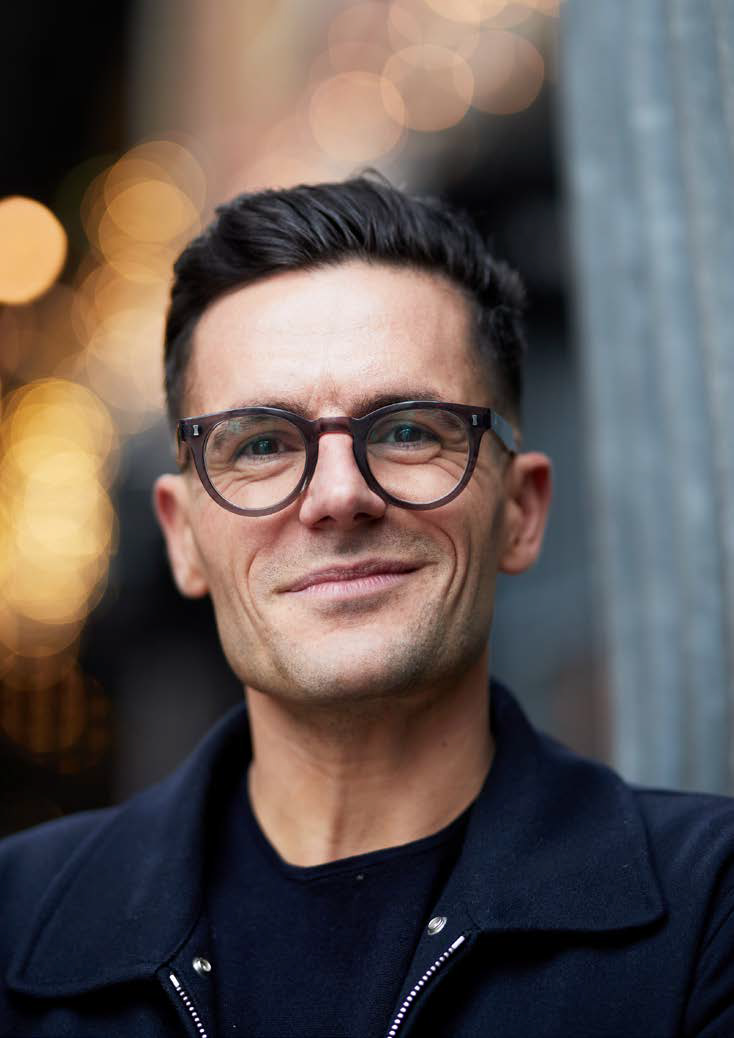

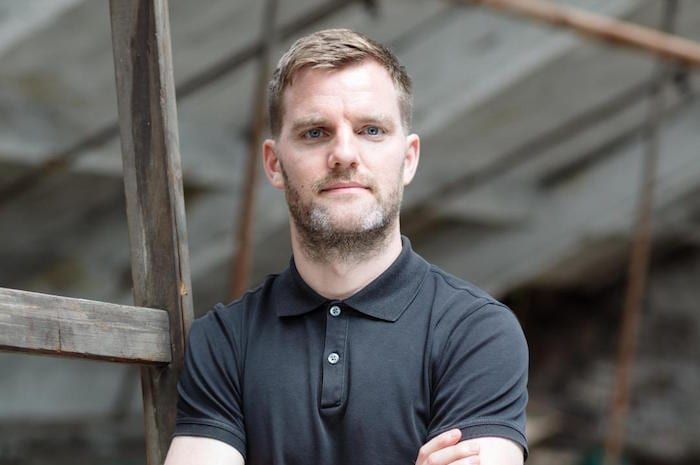

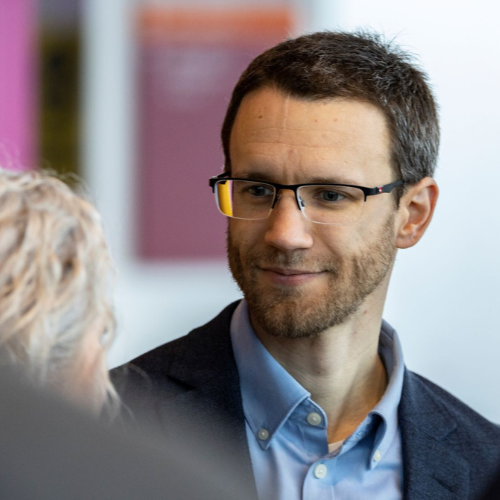








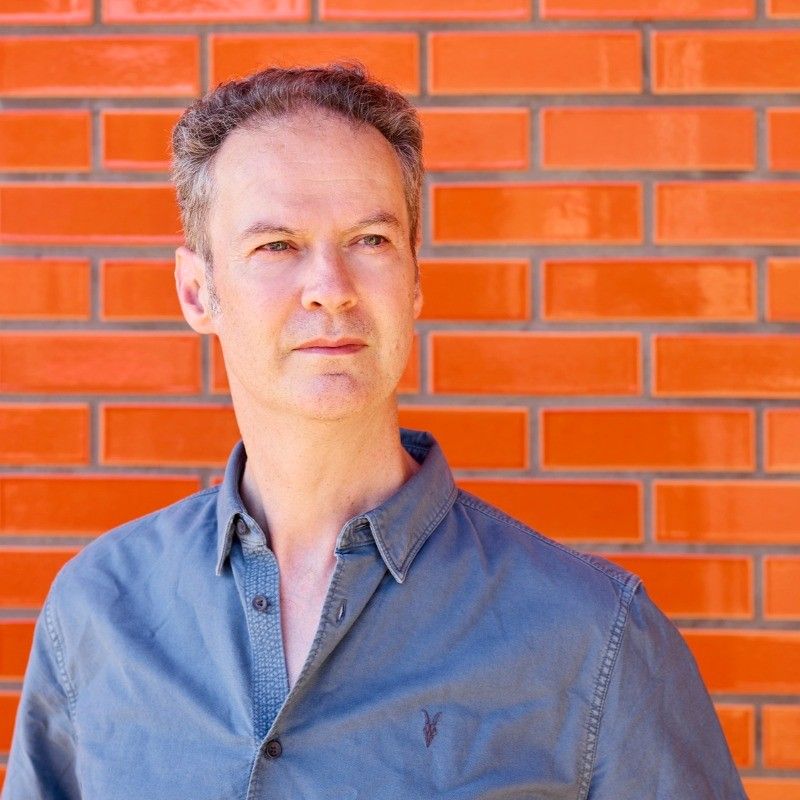







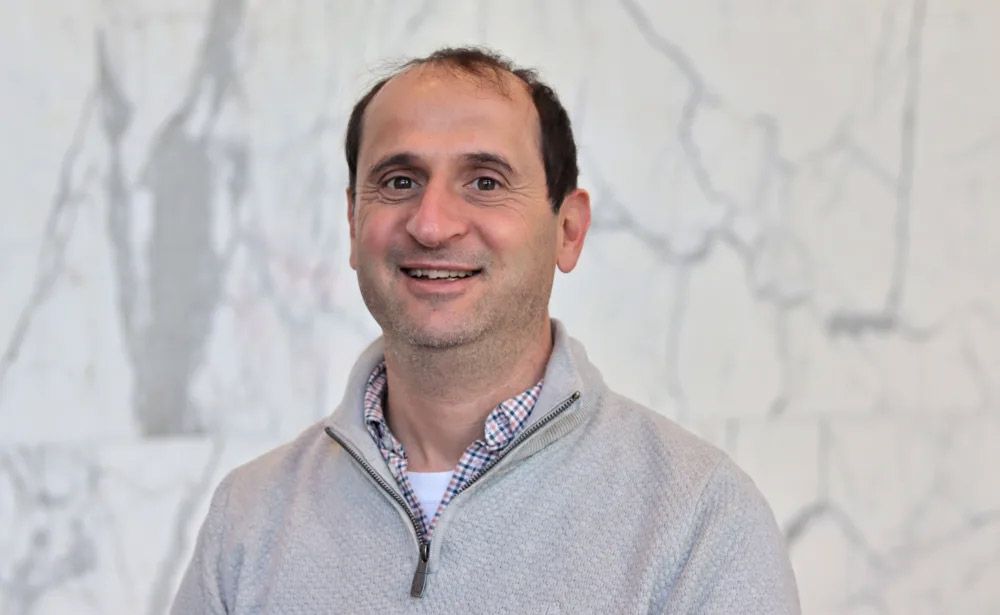

























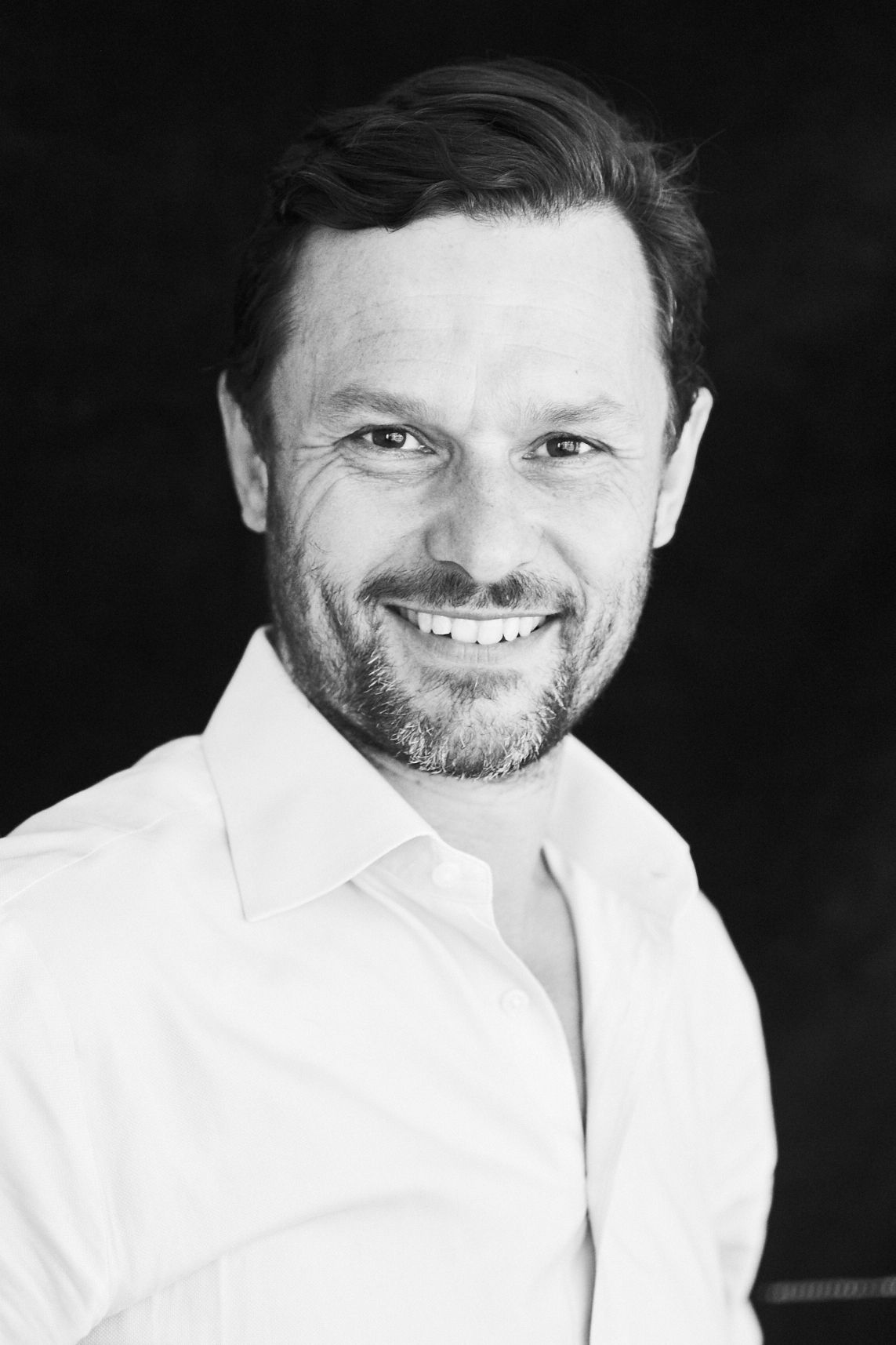


































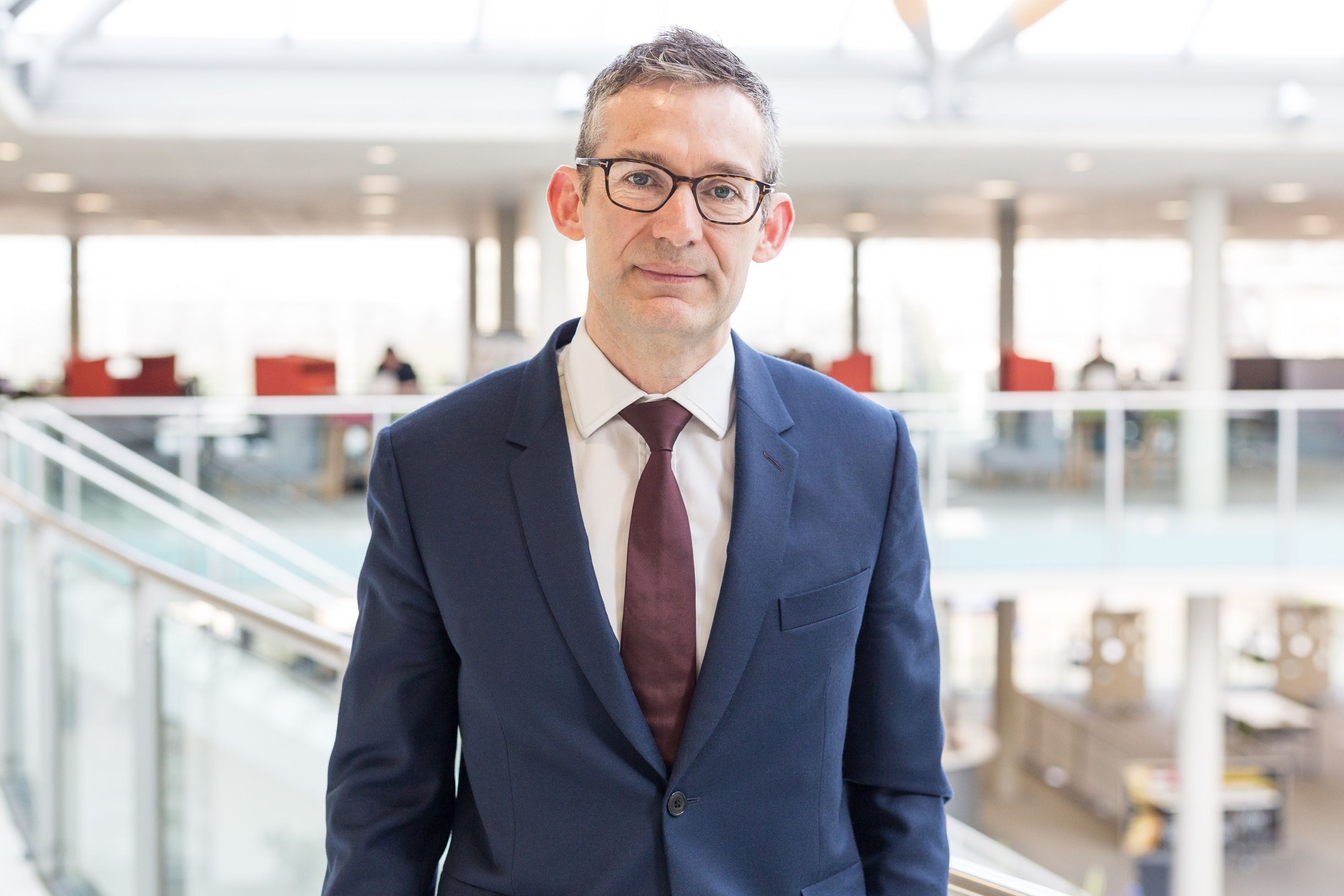






























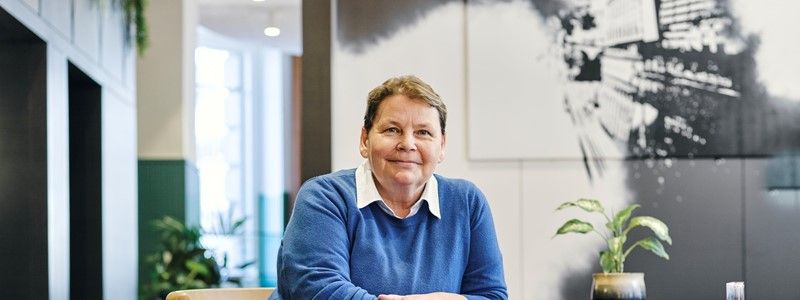

















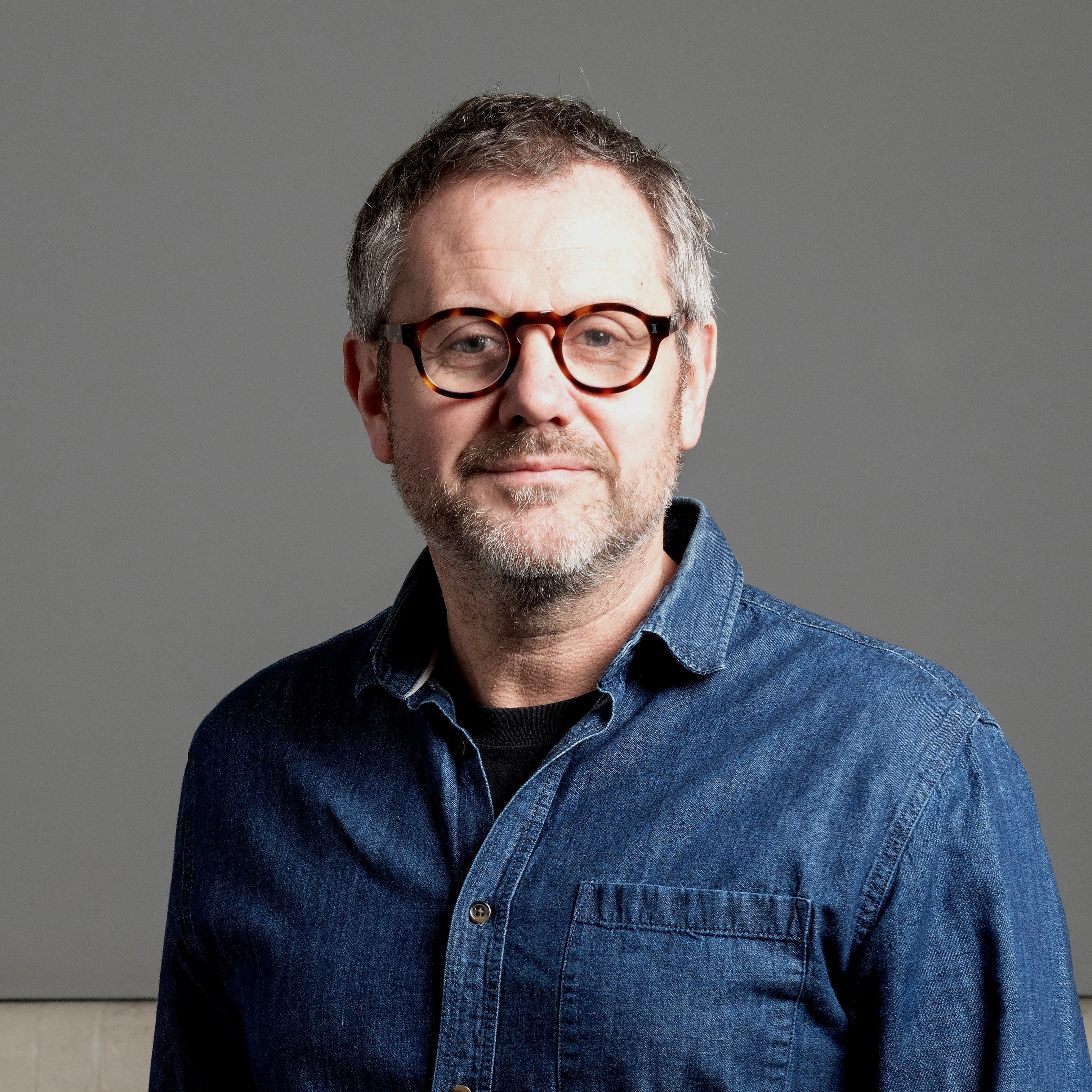


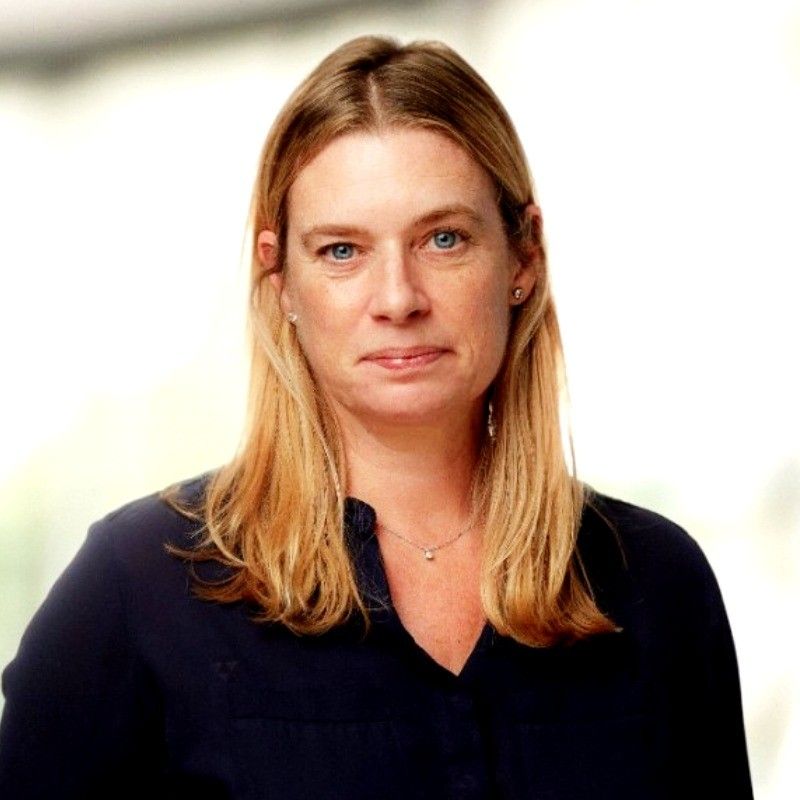






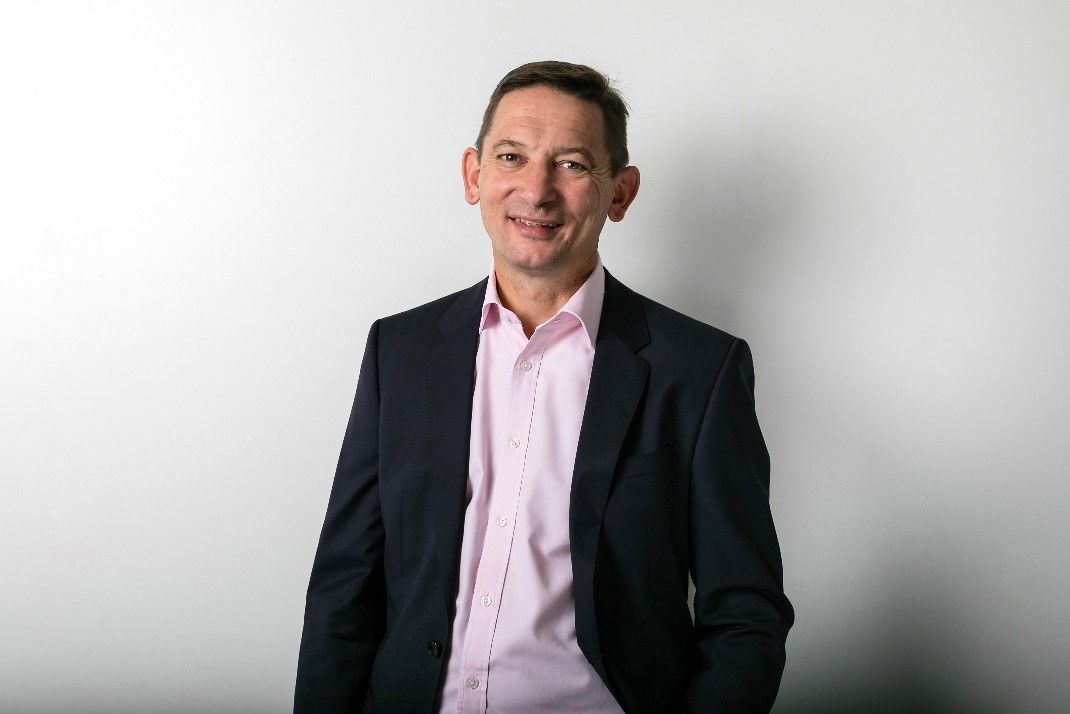












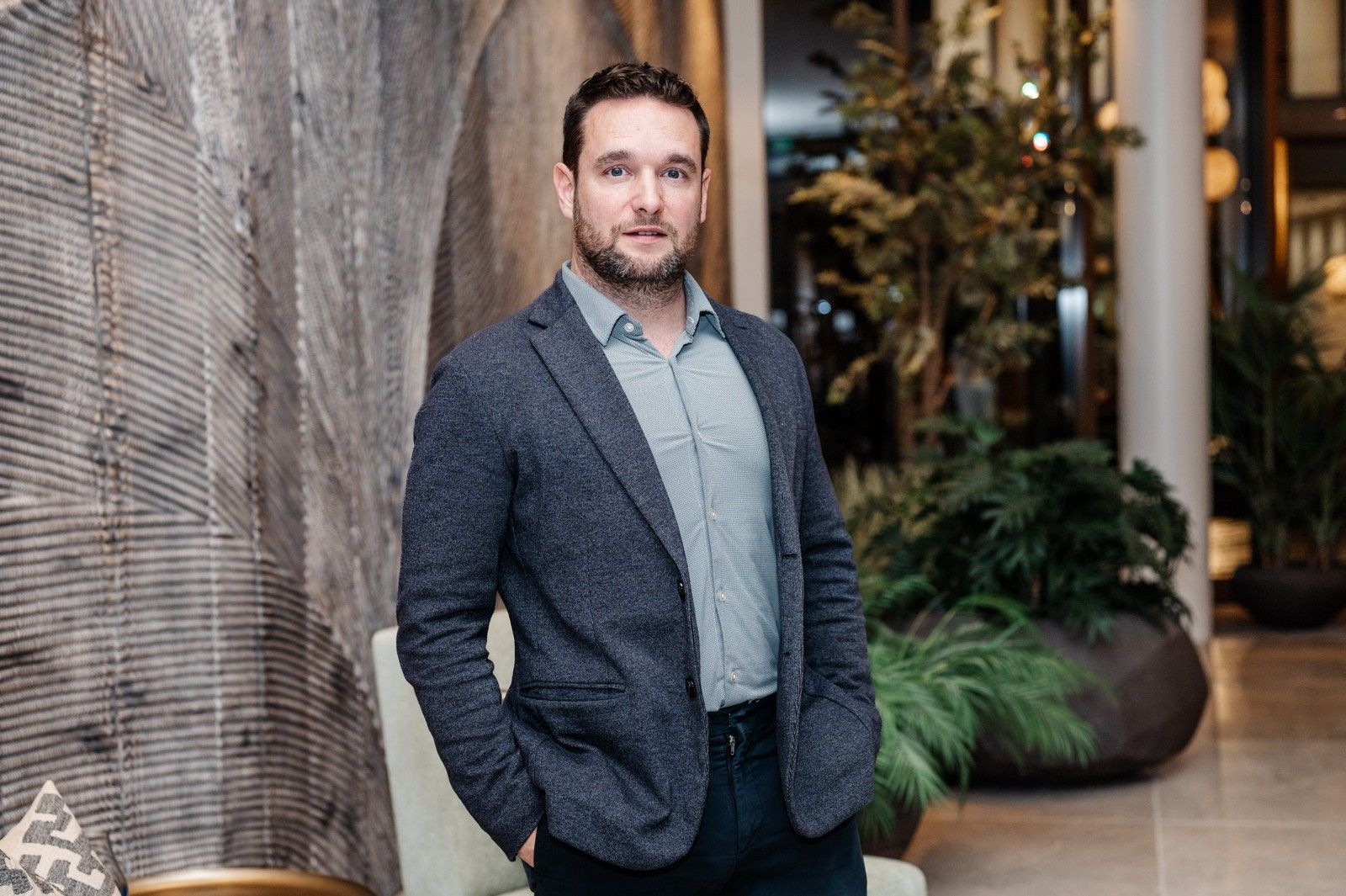




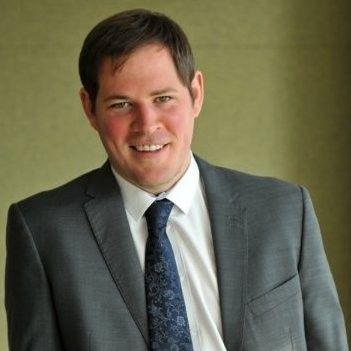




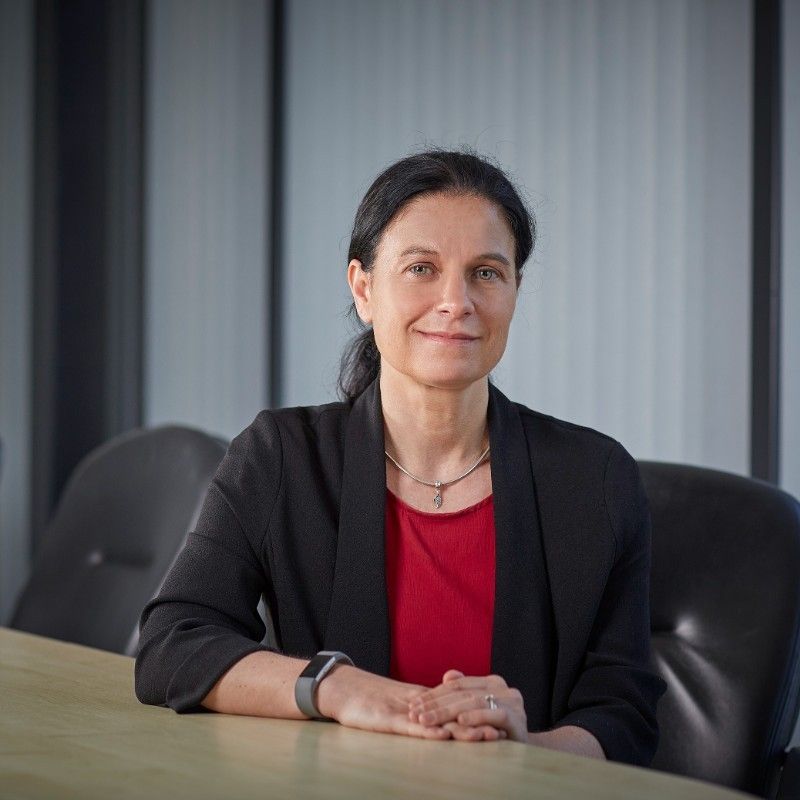









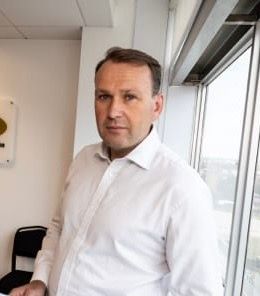














_-High_Res.png)
